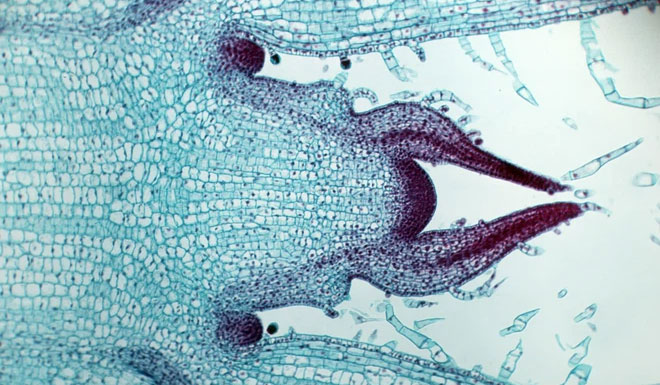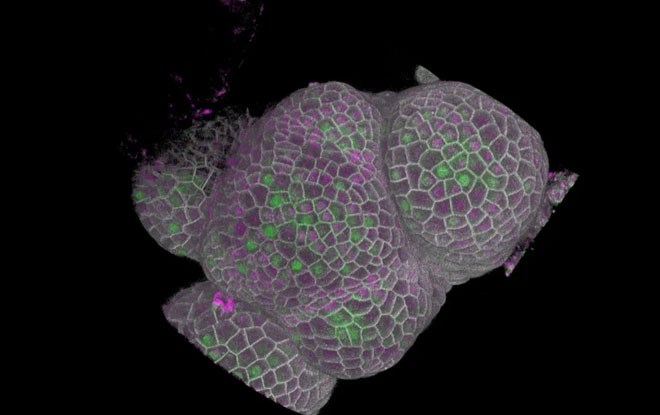In a study published in the journal Science last month, Sablowski and colleagues revealed how plants perform this adjustment: Cells use DNA as a measuring stick.

For a long time, a question has puzzled generations of biologists: how do cells know they are big enough?
Robert Sablowski, a plant cell biologist at the John Innes Centre in Norwich, England, made this discovery after accidentally reviewing old data on his computer. He had previously worked on a research project involving a protein called KRP4. By combining it with a protein from a luminescent jellyfish, Sablowski was able to track the activity of the protein in plant cells, but he did not realize it would be key to the regulation of cell size.
This discovery could have a significant impact on research related to both plant and animal cells, as well as influence the future of agriculture.
For a long time, a question has puzzled generations of biologists: how do cells know they are big enough?
For organisms to grow, cells must undergo a process of growth, DNA replication, and division. However, scientists have long noted that division does not necessarily produce identical cells – sometimes they are quite varied, and cell size is adjusted afterward. In the study published in the journal Science last month, Sablowski and colleagues revealed how plants make this adjustment: Cells use DNA as a measuring stick.
Sablowski noted that cells need a constant-sized object as a measure, and that is DNA. DNA does not change length in proportion to cell growth.
Martin Howard, who helped develop the mathematical formulas used in the research, commented: “This has long been a mystery in biology; everyone wonders how cells self-assess their size.” Adjusting cell size is a crucial function: if a cell is too large, it can hinder the extraction of genetic information; if it is too small, the cell may not have enough space to divide, leading to errors and resulting in diseases.
When observing plant cells at a magnification of 1000X, the research team focused on the behavior of the KRP4 protein, which plays a role in controlling the duration of the growth phase before DNA replication. During development, the team discovered that KRP4 drifts freely in the cell nucleus, preventing the cell from dividing too early.
 KRP4 under a microscope at 1000X.
KRP4 under a microscope at 1000X.
However, just before division, the team observed that KRP4 no longer drifts freely but binds to the cell’s DNA to ensure that both daughter cells receive an equivalent amount of protein. Sablowski explained that DNA acts like a measuring stick, allowing a specific amount of KRP4 to be extracted from the cell’s protein reservoir. Any remaining KRP4 inside the cell will be eliminated by another protein just before division. This cycle will repeat with the new daughter cells.
Experiments confirmed that if the protein regulating the amount of KRP4 in the cell nucleus is destroyed, cell size becomes abnormal. This reinforces the conclusion regarding the role of KRP4 in the regulation of cell size.
Scientists are excited about this discovery and its potential applications in enhancing agricultural yields. Throughout the process of breeding and cultivation, humans have selected for varieties with larger cells, as this often also means larger fruits and seeds. Larger plants can also contribute to bioenergy production. Neelima Sinha, a plant scientist at the University of California, Davis, expressed interest: “The optimal energy source for our planet is the Sun. Almost every form of energy we use is converted through plants. Even fossil energy like oil and coal are remnants of ancient plant life.”
Larger plants also benefit the atmosphere by storing more carbon underground. According to Sinha, “The key lies in the biomass of plants. And that is achieved through cell growth and division.”
Scientists at the John Innes Centre also recognize the broader potential of this discovery. “Understanding these mechanisms in plants can also guide similar research in humans,” Sablowski noted. He mentioned that he recently read studies suggesting a similar size-regulating mechanism in human cells, where a key protein functions as a tumor suppressor, and when disabled, leads to various types of cancer.



















































